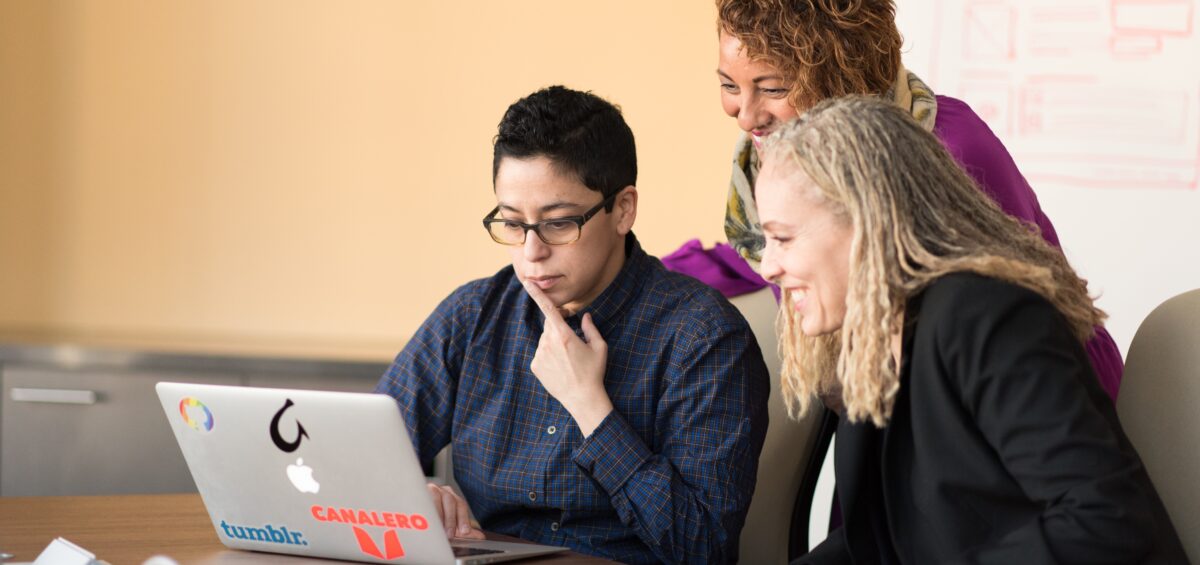Should I Do Individual Clinical Supervision or Group Clinical Supervision?
By Shannon Heers
As a provisionally-licensed counselor or social worker, you’re pursuing getting your full license so that you can practice therapy independently. You have done some research and found out that you can count both individual and group supervision towards your supervision hours, but you’re not sure where to start. Should you do individual supervision or group supervision?

Group Clinical Supervision
Group clinical supervision is a group of therapists coming together to discuss cases, work through ethical dilemmas, and talk about trends in the field. The actual number of therapists per group for group supervision depends on the licensing requirements and the group size preference of the clinical supervisor. Usually, group sizes are between 2-10 therapists each, although most tend to be in the 4-6 member range.
An experienced group clinical supervisor facilitates the supervision groups and provides the structure and oversight for the group. Groups can meet monthly or every 2 weeks, depending on the licensure requirements. Group is often used as a supplement to individual supervision because usually there are limits on the number of group supervision hours you can count as hours towards your licensure.
Group supervision is often more affordable than individual supervision so it makes an attractive alternative to just getting individual supervision. In addition, in a group you’re exposed to many other therapists other than just your clinical supervisor, which increases the modalities and interventions that you’re exposed to when reviewing cases.
 Groups can be very powerful, regardless of whether you’re in a homogenous group with others at your same level, or a heterogeneous group with therapists of all different levels of experience and training. Feeling a part of something, when you’re so new in the field and learning so much, really feels comforting for you as a therapist. You’ll also (hopefully!) get unwavering support from other group members when you’re having a hard time or a difficult case.
Groups can be very powerful, regardless of whether you’re in a homogenous group with others at your same level, or a heterogeneous group with therapists of all different levels of experience and training. Feeling a part of something, when you’re so new in the field and learning so much, really feels comforting for you as a therapist. You’ll also (hopefully!) get unwavering support from other group members when you’re having a hard time or a difficult case.
You’ll also be exposed to other clinical modalities or interventions that you normally would not use yourself but may now consider getting additional training in after you hear about them in your group supervision. Expanding your horizons and further your professional development are important factors in group supervision.
Individual Clinical Supervision
Individual clinical supervision is most often thought of when provisionally licensed therapists and social workers like yourself start to pursue your licensure supervision. And for good reason! There are many benefits of getting regular clinical supervision with your clinical supervisor.
When you engage in a professional supervisory relationship with your clinical supervisor, you both learn more about each other as the relationship progresses. Your supervisor learns how to better
support, teach, and challenge you, and you learn more about your supervisor’s expectations, clinical expertise, and experience. As this relationship deepens and grows, you as the supervisee reap the benefits.
The supervisory relationship, which is most prevalent in individual clinical supervisor, can also often mimic the clinical relationship that you have with your clients. You are subtlety learning how to create and expand your relationships with your clients through your relationship with your clinical supervisor.

Individual clinical supervision also gives you the opportunity to delve deeper into your cases through case presentations and reviews. You can do a deep dive into one of your cases and discuss it thoroughly, thus providing you with better clinical tools and learning.
You’ll find that in individual supervision, you’ll get more support and encouragement from your supervisor. Perhaps you’re anxious and having a bit of “imposter syndrome” when you meet with new clients; supervision is a great place to explore your own reactions to your clients so that they don’t interfere with your counseling ability.
I have found one of the most powerful tools for learning and growing in clinical practice is when I review audio and video tapes of portions of sessions with my supervisees. Often, the supervisee themself comes up with things they could have done differently, and it gives them a chance to see how they are interacting visually with the client in session.
Different But Necessary
I fully believe that both group and individual clinical supervision are essential for the professional growth and development of counselors, therapists and social workers. If you’re only doing individual supervision, you’re missing out on a lot of learning opportunities and moments to connect with other therapists in your field. While supervision can be difficult, you will thank yourself for the investment as your career progresses!
How can we help
Here at Firelight Supervision, we offer both individual and group clinical supervision to provisionally licensed therapists in these states. If you’re interested in learning more about our clinical supervision groups check out our Group Supervision page. And, good luck on your journey towards becoming fully independently licensed!
Author Bio
 Shannon Heers is a psychotherapist, approved clinical supervisor, guest blogger, and the owner of a group psychotherapy practice in the Denver area. Shannon helps adults in professional careers manage anxiety, depression, work-life balance, and grief and loss. Follow Firelight Supervision on Instagram.
Shannon Heers is a psychotherapist, approved clinical supervisor, guest blogger, and the owner of a group psychotherapy practice in the Denver area. Shannon helps adults in professional careers manage anxiety, depression, work-life balance, and grief and loss. Follow Firelight Supervision on Instagram.



